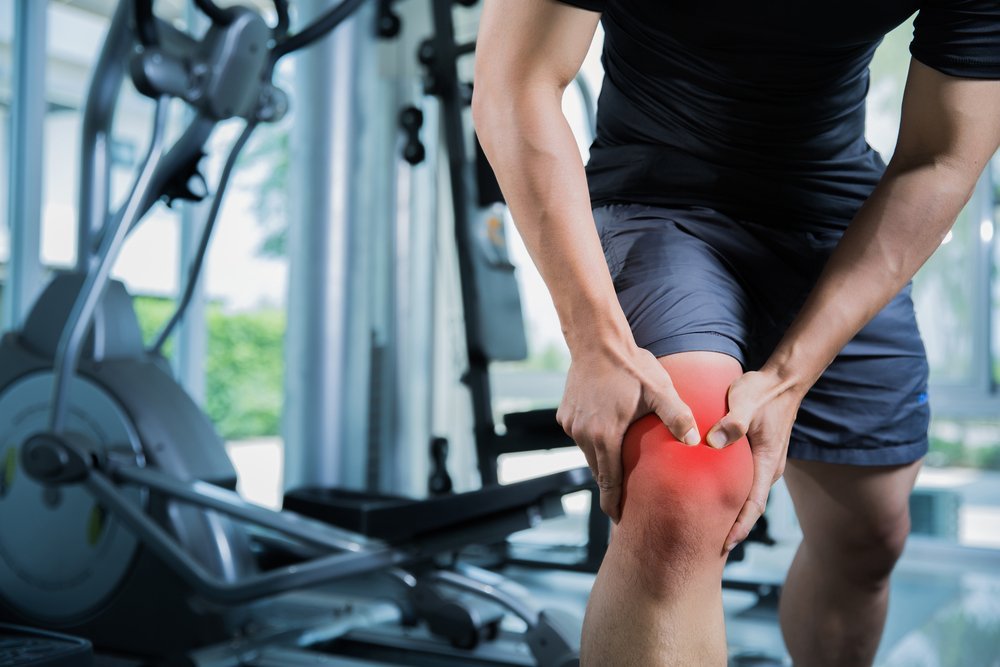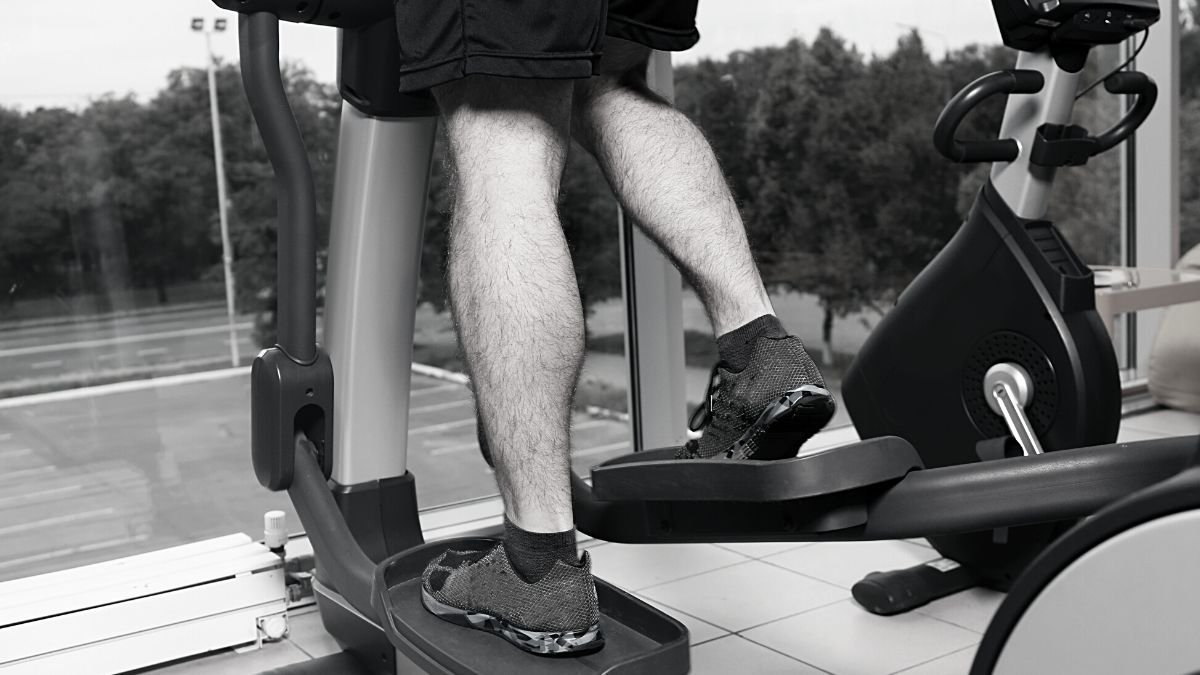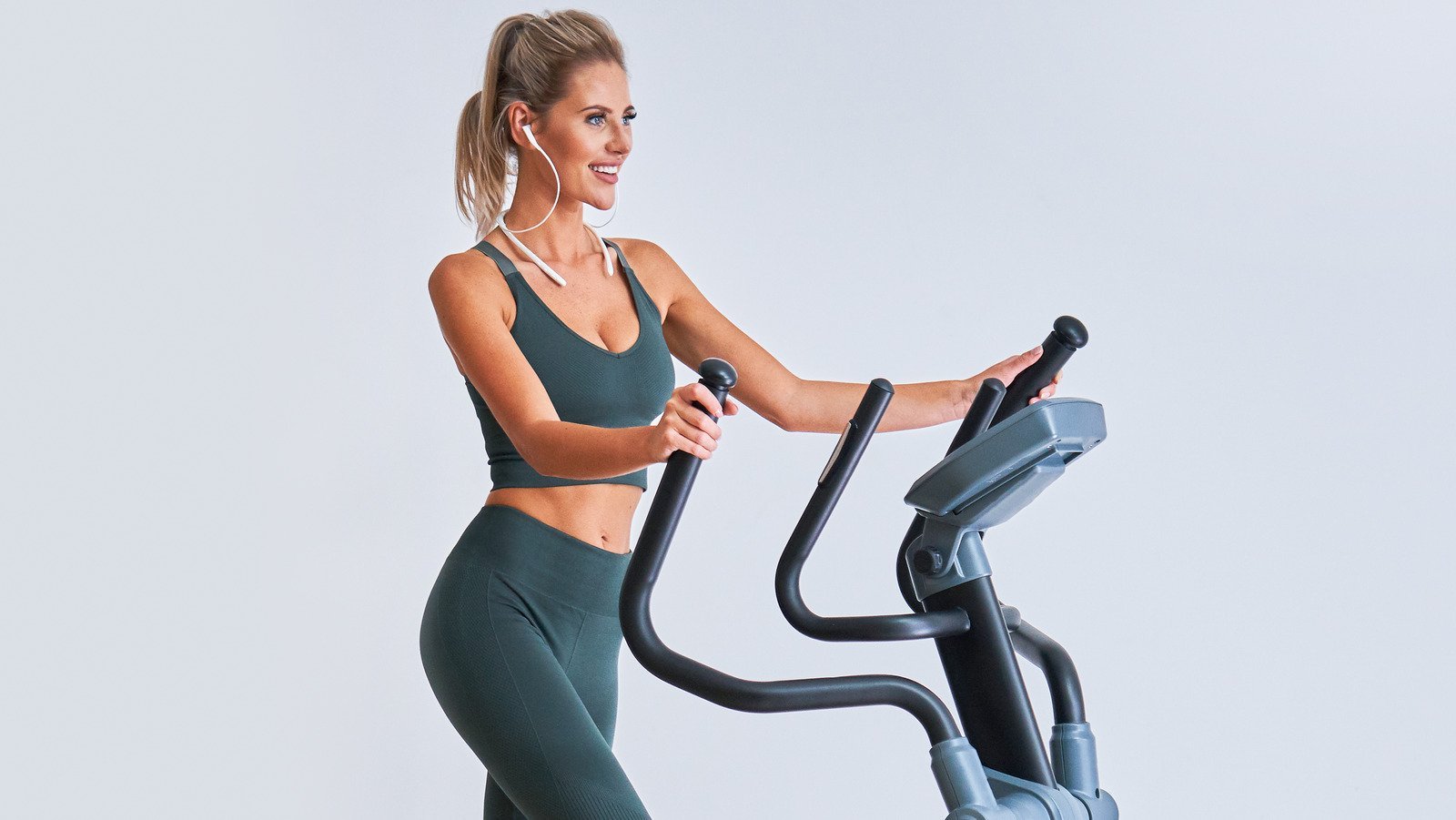Tired of knee pain ruining your elliptical sessions? Say no more! In this guide, we’ve got insider tips to help you Protect Knees on Elliptical and enjoy pain-free workouts. Let’s get you back on track to those smooth, effortless strides!
Table of Contents

Importance of Proper Form on the Elliptical Machine
Proper form is crucial when using an elliptical machine, especially for those with knee issues. The knees bear a significant amount of stress and pressure during exercises on the elliptical, making it essential to maintain good form throughout the workout. By doing so, you can minimize the risk of knee pain or injury.
One key aspect of proper form on the elliptical machine is maintaining correct posture. Keeping your back straight and shoulders relaxed helps distribute your body weight evenly and reduces strain on the knees. Additionally, paying attention to your stride length is important as it affects the motion of your feet and joints. A shorter stride may be more suitable for individuals with bad knees or arthritic conditions.
Engaging the right muscles while using an elliptical trainer also plays a vital role in supporting knee joints. Strong leg muscles help stabilize and protect these vulnerable areas during workouts. Incorporating strength training exercises that target quadriceps, hamstrings, calves, and glutes into your exercise routine can improve muscle condition around the knee joint.
Moreover, choosing low-impact exercises like elliptical workouts can benefit those with knee problems by minimizing impact forces on bones and joints. This type of exercise provides a range of motion without excessive stress on arthritic knees or injured joints compared to high-impact activities such as running or jumping. It also promotes blood flow to nourish cartilage within the joint while enhancing bone density.
By understanding how proper form influences our bodies during elliptical exercise sessions, we can better protect our knees from unnecessary strain or injury. Remembering these guidelines allows people with various fitness levels or existing knee conditions to safely engage in this effective form of exercise without experiencing joint pain afterwards.
Understanding the Impact of Elliptical Workouts on Knee Health
Elliptical workouts are known for their low-impact nature, making them a popular choice for individuals looking to maintain knee health. Unlike high-impact exercises such as running or jumping, elliptical machines provide a gentler workout that reduces stress on the knees. This is especially beneficial for those with knee issues or previous injuries, as it minimizes the chances of further damage to the joints and promotes healthier knee cartilage.
One key aspect of protecting your knees during elliptical exercises is maintaining proper posture. It’s important to keep your feet flat on the pedals and engage your core muscles while using an elliptical machine. This helps distribute the workload evenly throughout your entire body and prevents unnecessary strain on the knees. Additionally, wearing a knee brace can provide added support and stability during your workout session, reducing any potential discomfort or pain.
Another advantage of incorporating elliptical workouts into your exercise routine is its ability to improve cardiovascular health without putting excessive stress on the knees. By engaging in regular low-impact cardio workouts like using an elliptical machine, you can enhance blood circulation, strengthen heart muscles, and increase overall endurance levels. These benefits make it an ideal form of exercise equipment for individuals seeking impactful yet joint-friendly aerobic exercise.
In summary, understanding the impact of elliptical workouts on knee health reveals its numerous advantages for maintaining healthy knees and preventing injury. The low-impact nature of this form of exercise makes it suitable for people with knee issues or previous injuries who want to engage in impactful cardiovascular exercise without compromising their joint health. By following proper posture techniques, utilizing supportive gear such as knee braces if necessary, and incorporating these low-impact workouts into a well-rounded exercise regimen, you can enjoy all the benefits that come with having stronger knees while minimizing any potential risks associated with high-impact exercises

How to Protect Knees on Elliptical Exercises
Elliptical trainers are a popular choice for intense workouts that provide a low-impact alternative to running or other high-impact exercises. When using an elliptical machine, it’s important to protect your knees from potential injuries. One way to do this is by maintaining proper form throughout your workout.
Firstly, focus on keeping an upright posture while using the elliptical. This helps distribute the impact evenly across your leg muscles and joints, reducing the risk of overstressed muscles or joint motion. Avoid slouching or leaning forward as this can put extra stress on your knees and lead to discomfort or pain.
Secondly, pay attention to the motion control brace on the elliptical trainer. This feature allows you to adjust the resistance level and foot pedals according to your comfort level and desired intensity. By setting these parameters correctly, you can prevent any unnecessary stress on your knee joints during exercise.
Lastly, consider incorporating other exercises into your routine that promote bone health and strengthen supporting muscle groups. Activities such as leg curls and extensions help target specific areas like quadriceps muscles (quad muscles) and hamstring muscles in order to maintain overall stability in the knee joint.
By following these guidelines for protecting your knees during elliptical training sessions, you can minimize the risk of injury while maximizing the benefits of this effective workout option. Remember that maintaining good form, adjusting resistance levels appropriately, and incorporating complementary exercises will contribute towards a healthy knee joint allowing for pain-free movement both during exercise and in daily life.
The Role of Muscles in Supporting Knee Joints on the Elliptical
Muscles play a crucial role in supporting knee joints during elliptical workouts. When using an elliptical machine for extended periods of time, it is important to engage the right muscles to maintain proper form and prevent future injury. This section will discuss the specific muscles involved in supporting knee joints on the elliptical and how they contribute to overall knee health.
One of the main benefits of using an elliptical machine is its low-impact nature, making it a popular choice for individuals with joint issues or those recovering from injuries. The smooth motion of this gym machine puts less stress on the knees compared to other forms of cardio exercise such as running or jumping. However, improper alignment or excessive strain can still lead to discomfort or pain in the knees.
To ensure proper alignment and support for your knee joints while using an elliptical, it is essential to engage your core muscles and maintain good posture throughout your workout. Your abdominal muscles help stabilize your body during movement, taking some pressure off your hip joints and transferring it onto these stronger muscle groups. Additionally, engaging your glutes helps distribute weight evenly between both legs, reducing strain on individual knees.
By strengthening these core and lower body muscles through regular use of an elliptical machine, you can improve stability around your knee joints and decrease the risk of common injuries like sprains or strains. Stronger leg muscles also provide better support when carrying extra weight during exercises aimed at Weight Loss goals.
In summary (without explicitly stating “in summary”), understanding which muscles are involved in supporting knee joints on the elliptical can greatly benefit your fitness routine. By focusing on maintaining proper alignment and engaging key muscle groups like abdominals and glutes, you can protect yourself from unnecessary strain or injury while enjoying a cardiovascular workout indoors.
Tips for Choosing the Right Elliptical Machine for Your Knees
When choosing an elliptical machine for your knees, it is important to consider the motion patterns that the machine offers. Some machines use circular motion patterns, while others use artificial motion patterns. Circular motion patterns mimic natural stride and closed chain movement, which can be more gentle on the knees. On the other hand, artificial motion patterns may put additional stress on the knee joints.
In addition to considering the type of motion pattern, proper body posture is crucial when using an elliptical machine. Many people make the common mistake of adopting improper posture during their workouts, which can lead to injuries and excess pressure on the knees. To protect your knees, maintain correct posture by keeping your back straight and shoulders relaxed throughout your workout.
Furthermore, it is essential to choose an elliptical machine that suits your individual needs and body condition. Factors such as foot numbness or medical conditions should be taken into account when selecting a machine. Additionally, if you are recovering from a runner’s injury or have specific cardiovascular goals in mind, opt for a machine that allows for recovery runs or aids in relief through features like adjustable resistance levels or hyaluronic acid supplements.
By carefully considering these factors and making informed decisions about both form and equipment choice, you can ensure a safe and effective cardio training experience without placing excessive strain on your knee joints.

FAQ
Why is proper form important when using an elliptical machine?
Proper form helps to maintain proper alignment and reduce stress on the knees during the workout. It promotes a smooth and efficient motion that minimizes the risk of knee injury.
How does using an elliptical machine impact knee health?
Elliptical workouts are low-impact exercises that can be beneficial for knee health. They provide a cardiovascular workout without putting excessive stress on the knees, making them a suitable option for individuals with knee concerns.
How can I protect my knees while using an elliptical machine?
To protect your knees, it is important to maintain proper form, avoid overstriding, and listen to your body. Start with a low resistance level and gradually increase it as your knees adapt to the exercise. If you experience any pain or discomfort, it is advisable to stop and consult a healthcare professional.
What role do muscles play in supporting knee joints during elliptical workouts?
Strong muscles, especially those in the legs and hips, provide support and stability to the knee joints during elliptical exercises. Strengthening these muscles can help reduce the risk of knee injuries and improve overall knee health.
How can I choose the right elliptical machine for my knees?
When choosing an elliptical machine, consider factors such as stride length, adjustable resistance levels, and cushioning. Opt for a machine that offers a comfortable and natural range of motion, suitable for your individual knee needs. Consulting with a fitness professional or physical therapist can also be helpful in making the right choice.
